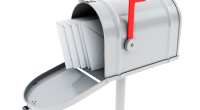Importance of Using the Right Type of Network Cable for the Right Application
While Wi-Fi connection has its advantages in terms of convenience and flexibility, wired connections are generally more stable and reliable than the wireless ones. To create wired connections, network cables are used to connect computers to the network, router or modem. The cables may consist of twisted pairs of copper wire or solid wires in RJ-45 connectors, but faster cables can use all four pairs.
Different types of network cable are used for different distances and different applications. It is important to understand that the type of cable used can affect the network connectivity and speed. So it is essential to use the right cable for the specific application. To choose the right type of network cable you need first to decide the network type and speed you want and the distance and terrains that need to be covered.

Types of Network Cables
A wide range of network cables is available on the market today. The various types are often differentiated by category definitions, but they can also be recognized by the types of plugs they feature.
Type | Description |
Cat 3 | One of the oldest forms of network cables that are still in use today. It’s capable of carrying 10 megabits per second of data or voice transmission. |
Cat 5 | This cable is able to carry data at a higher transfer rate. Cat 5 can support either 10 MBPS or 100MBPS speeds, and it is known as fast Ethernet. It can also be used for telephone signals and video. |
Cat 5E | Optimized to reduce crosstalk and unwanted transmission of signals between data channels, Cat 5e is the most popular category of network cables available on the market. These cables can be used in any modern network installation. |
Cat 6 | The major difference between Cat 5e and Cat 6 is the transmission performance. Cat 6 are able to handle Gigabit Ethernet with a bandwidth of up to 250 MHz. Improvements such as better insulation and thinner wires are responsible for providing a higher signal. Plus, it is better suited for higher electromagnet interference environments. |
Cat 7 | A Cat 7 can support speeds of up to 10 Gbps and up to 600 MHz bandwidths. These cables are shielded and bulkier and are also difficult to bend. Additionally, they have to be grounded, otherwise, reduction of the performance may occur and there will be no improvement over Cat 6 and performance may be worse than Cat 5. |
Network Cable Plugs
Network cables come with a plug at each end. The type of plug or connection that comes with the cable determines its use. The most popular cable is called straight-through cable and is used to connect two different devices, for example, a computer to a switch or hub. A crossover cable features different plugs on both ends and is used to connect two similar devices without the need of a switch in the middle. Simply said, a crossover cable can be used to connect one computer directly to another computer.
Choosing the Right Network Cable
To choose the right category of network cable, you must determine your connection speed. Cat 5 or 5E can be used for connections up to 100 Mbps and Cat 6 are recommended for faster connections. The next factor to consider is the length of cable needed. According to experts, the signal usually degrades in longer cables, thus short cables tend to be faster and provide clearer signal. They recommend Cat 6 for distances of 100m or more, Cat 5 E for 100m or less, and Cat 5 for distances below 20 m.



